Prenatal Care - A Story in Pictures
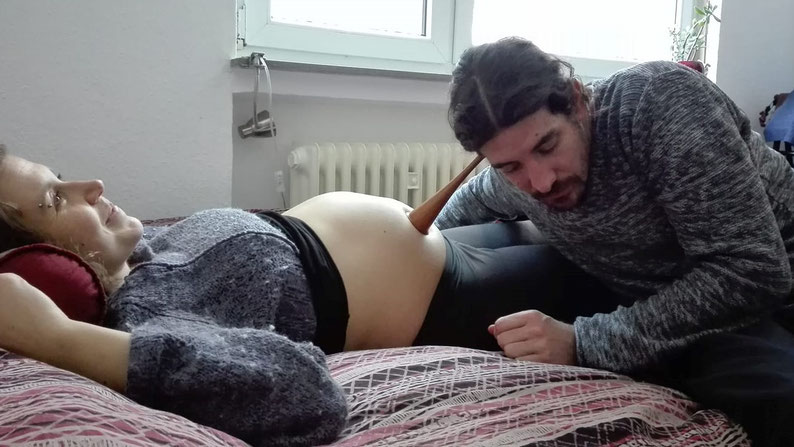
Daddy-to-be borrowed my pinard at a prenatal visit to listen to his child's heartbeat.
Prenatal Care Around The World
There are many different concepts in different cultures and countries about what constitutes safe prenatal care and who is the appropriate professional to provide it.
There are also parallels and general trends. During my 45+ years experience on Earth, living in different parts of the World, my 25+ years of experience as a mother, my 20+ years of professional work in the field of midwifery, I have observed a general increase in interventions, especially a turn towards ever earlier inductions and ever more caesarian sections. Which is truly deeply concerning.
In many countries, it is obstetricians that provide prenatal care. In some, it is midwives or a mix of midwives and obstetricians/gynaecologists. It can also be nurses or general physicians.
In the country in which I worked as a midwife in the last few years, Germany, prenatal care is mostly provided by gynecologists who run their own practices and who typically do not attend birth. That is typically done by gynecologists/obstetricians and midwives employed by hospitals. It is however entirely possible and legal for midwives to provide either full prenatal care or shared care between a midwife and a gynecologist. Ultrasound screenings, if desired, are done by the gynaecologist/obstetrican. In Germany, three ultrasound screenings are recommended in pregnancy.
While midwives and doctors technically are supposed to do the same things during a prenatal visit, the visits can defer widely between midwives and doctors, but also in between different midwives and in between different doctors.
I have always found it very important to take time to get to know the women and if desired, their partners and families, to listen to them and to provide respectful and highly individualized care. This creates a basis of trust and a feeling of support, well-being and empowerment for the women and their families. Continuity of care also contributes to the safety of the women and babies.
As many women in Germany, where prenatal care provided by midwives is not so common yet, often asked me what such a visit is like, I once did a little photo story of a prenatal visit at home.
Many thanks to Friederike and Tobias who allowed this visit to be documented for all of you and to Miriam who took the pictures.

I am arriving at the home of Friederike and Tobias who are expecting a baby very soon.
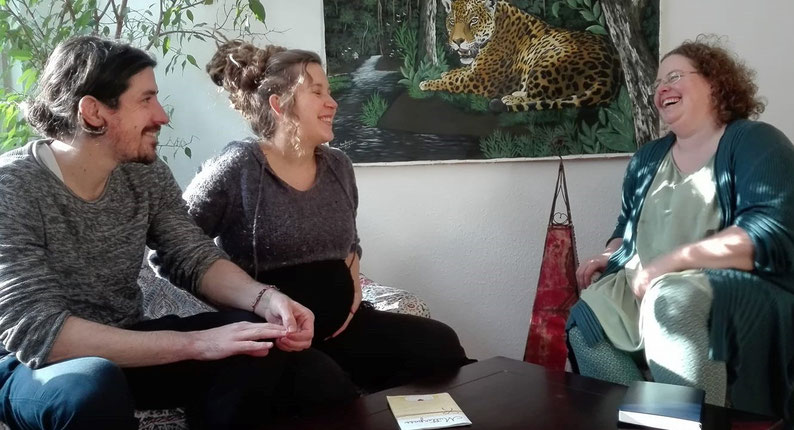
We are all having a talk and a laugh. Our conversation is a very important part of the visit. I have enough time to discuss all their questions. During these conversations, we also get to know each other better.
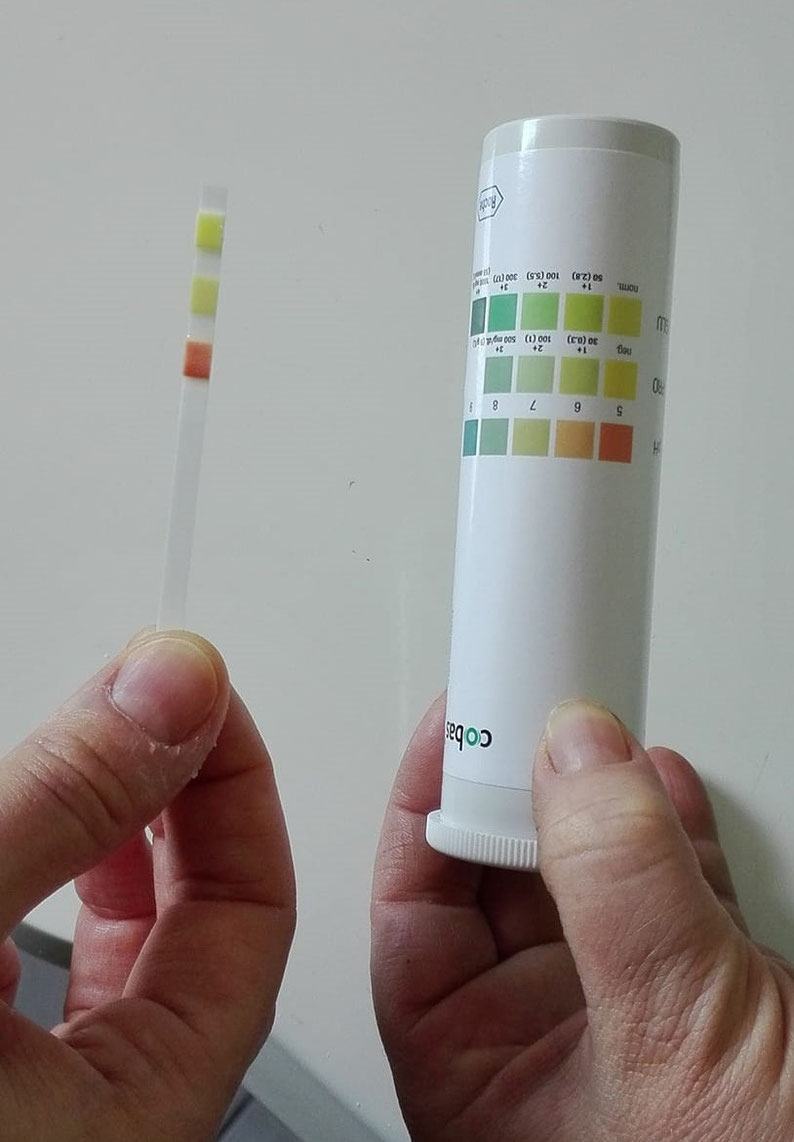
Friederike and I check her urine.
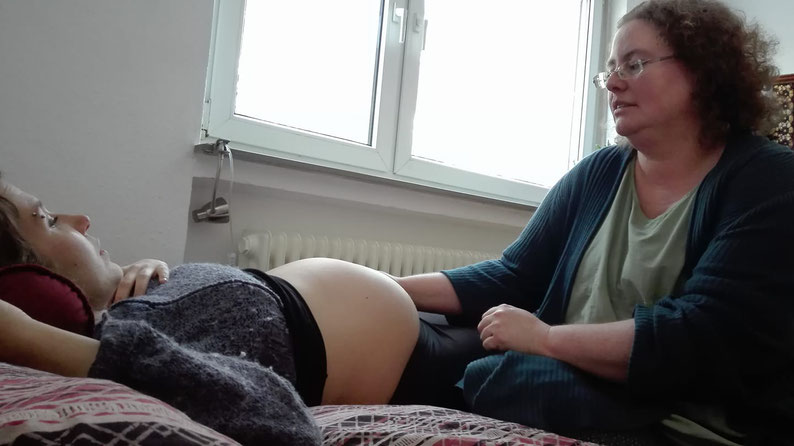
I am palpating Friederike's belly. This provides a lot of information about baby's position, growth, movements, engagement in the pelvis, amount of amniotic fluid...
It also allows all of us involved including the baby to "get in touch" with each other.
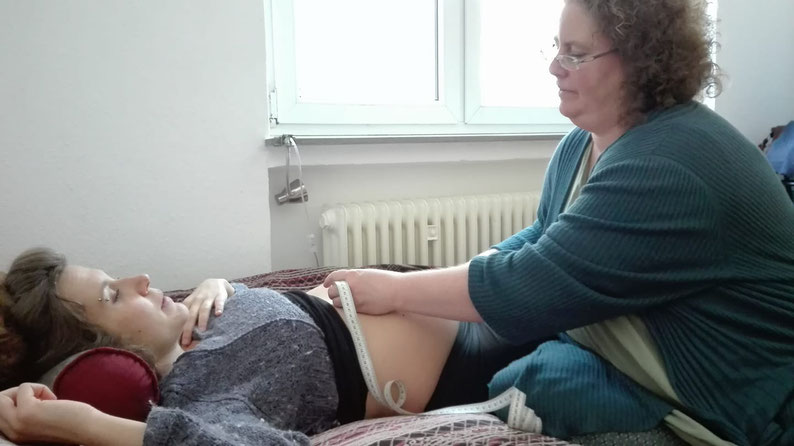
We measure the baby to follow up on its growth.
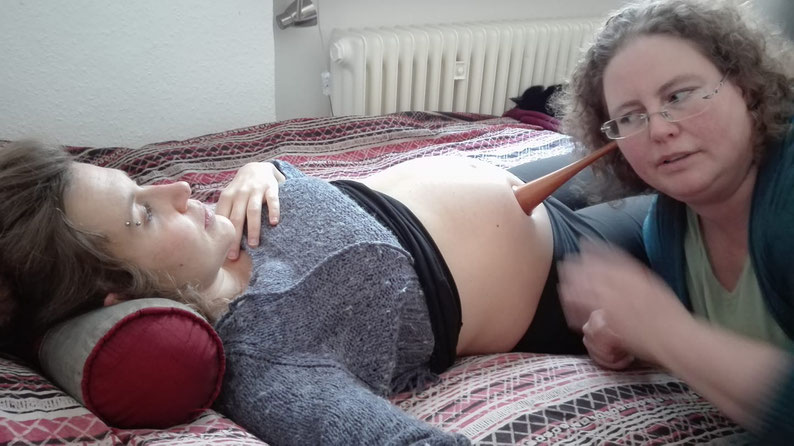
I listen to baby's heartbeat with a pinard.
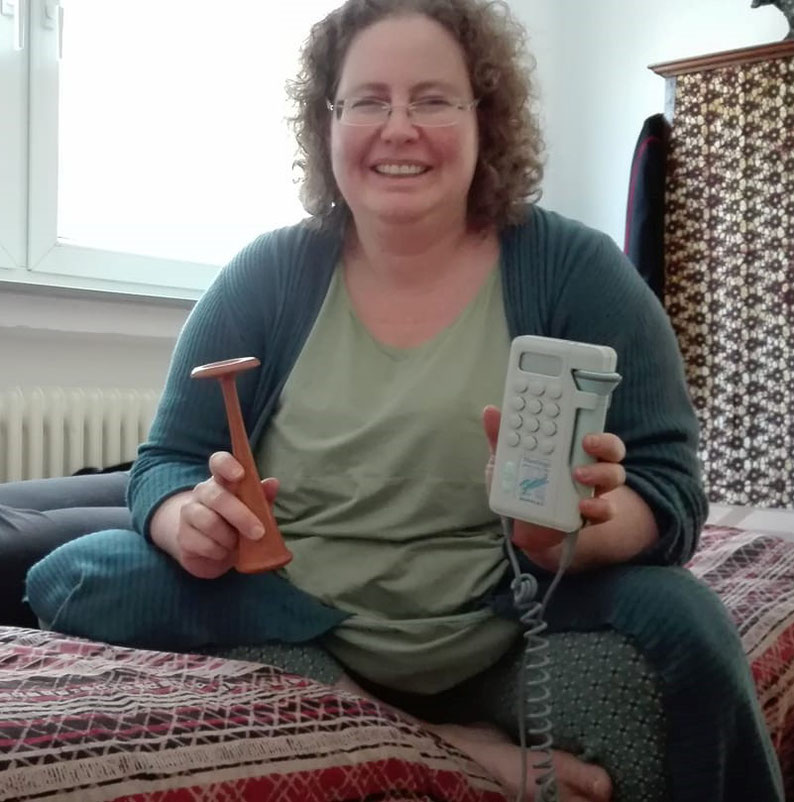
The heartbeat can be heard with a pinard or a dopton.
As the dopton uses ultrasound, many women prefer the pinard.
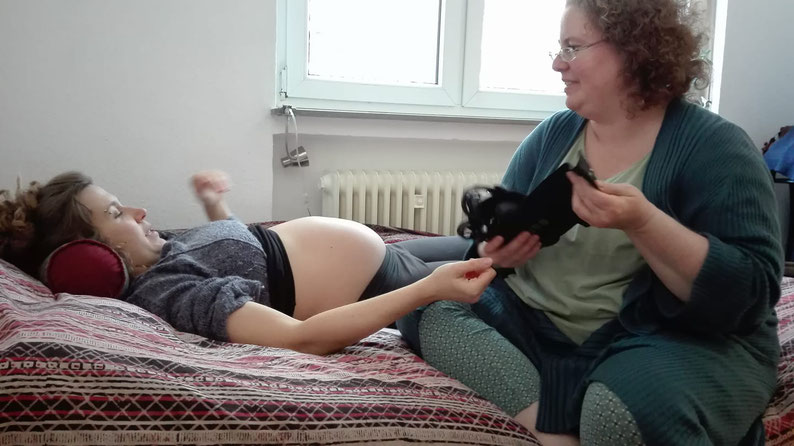
Taking the blood pressure is also part of the check-up.

At the end we document our findings. In Germany, that is done in the Mutterpass. This document sums up all the findings of the check-ups throughout pregnancy. The Mutterpass remains with the woman. It is her property. Usually every mother-to-be in Germany has one. They can be provided by gynecologists/obstetricians and by midwives.
